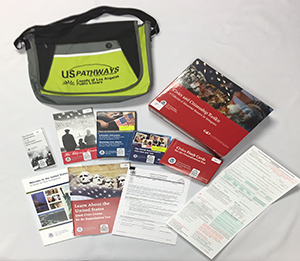Women’s History Month
What is LA County Library doing to celebrate Women’s History Month?
LA County Library is highlighting incredible women in history and their amazing, but sometimes unknown, contributions to their communities and the world. We’ll be celebrating all month with programs for all ages, and you’re invited.
Women Change Makers
Each of our Cultural Resource Centers has highlighted a courageous and influential woman for you to get to know.
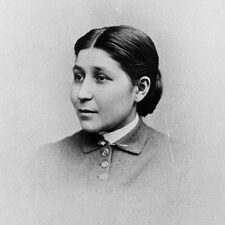
Susan La Flesche Picotte Highlighted by our American Indian Resource Center
Born on June 17, 1865, on the Omaha Reservation in Nebraska to Omaha Chief Joseph La Flesche (Insta Maza) and Mary Gale (Hinnungsnun), La Flesche Picotte’s family were well respected and believed in the importance of education. They were known for being Christians who assisted the Presbyterian missionaries. La Flesche Picotte herself attended Protestant missionary schools, the Elizabeth Institute in New Jesey which was a finishing school for young women, Hampton Normal and Agricultural Institute, and the Woman’s Medical College in Philadelphia. After graduating from the Woman’s Medical College in 1889, she became a physician for the Omaha Agency until 1893 when she had to resign to take care of her mother.
Though she was unpopular for supporting the Temperance Movement (a campaign to reduce the consumption of alcohol), her experience as a physician and missionary allowed her to advocate and lobby for her people. She wrote letters to the Bureau of Indian Affairs detailing the limited medical resources and poor health conditions of her people. She not only improved the preventative medical practices and provided spiritual support for her community, La Flesche Picotte also played a role in having the Presbyterian Board build a hospital on the reservation. She also fought for tribal sovereignty by reducing government restrictions on reservation lands and gaining more tribal control over the land allotments. La Flesche Picotte died September 18, 1915, in Walthill, Nebraska. The hospital on the Omaha reservation in which she advocated for is now renamed in her honor.
Books
Warrior of the People
Susan La Flesche Picotte
Native American Doctor: The Story of Susan LaFlesche Picotte
Susan LaFlesche Picotte
Biography Articles
Susan La Flesche Picotte, Encyclopedia of World Biography Online
Susan LaFlesche Picotte, Notable Women Scientists
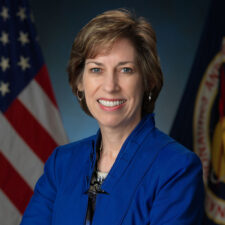
Ellen Ochoa Highlighted by our Chicano Resource Center
Throughout her career, Ochoa provided vital contributions to many space missions. These included deploying satellites and conducting experiments. She was the first Hispanic director of NASA’s Johnson Space Center and has received numerous awards for her contributions to science and education. Ochoa’s career has been groundbreaking, inspiring, and trailblazing for women and minorities in STEM fields. Her distinguished work has paved the way for future generations of scientists, engineers, and astronauts.
Ellen was born on May 10, 1958, in Los Angeles, California, USA. She grew up in La Mesa, a suburb of San Diego. She earned her Bachelor of Science degree in Physics from San Diego State University in 1980 and her Master’s of Science degree and a Ph.D. in Electrical Engineering from Stanford University. Ochoa is a classical flutist who played with the Stanford Symphony Orchestra. She took a flute with her on her first
Books for Children
Ellen Ochoa by Claudia Romo Edelman
Ellen takes flight : the life of astronaut Ellen Ochoa by Doreen Rappaport
Women in Space: 23 stories of first flights, scientific missions, and gravity-breaking adventures by Karen Bush Gibson
Engineering
Ellen Ochoa
Technology
Ellen Ochoa
Books for Young Adults
High flyers: 15 inspiring women aviators and astronauts
by Ann McCallum
Astronauts: women on the final frontier by Jim Ottaviani
Books for Adults
Galaxy Girls: 50 amazing stories of women in space
by Libby Jackson
The Six: the untold story of America’s first women astronauts
by Loren Grush
Space shuttle stories: firsthand astronaut accounts from all 135 missions
by Tom Jones
The Mercury 13 : the untold story of thirteen American women and the dream of space flight
by Martha Ackmann
Online Resources
Ellen Ochoa (Hoopla eBook) Juvenile
by Connor Stratton
The astronaut wives club (audiobook) Adult by Lily Koppel
To Fly Among the Stars: The Hidden Story of the Fight for Women Astronauts (Hoopla) Juvenile
by Rebecca Siegel
Women in Space Exploration (Hoopla eBook) YA
by Andrew Morkes
Woman in Motion
Kanopy:
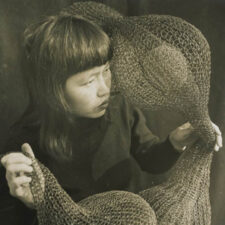
Ruth Asawa Highlighted by our Asian Pacific Resource Center
Born on a farm in Norwalk, California in 1926, Asawa’s artistic journey began during World War II when she and her family were forcibly interned by the US government due to their Japanese heritage. While interned, Asawa took classes in painting and drawing. After her release, she faced further challenges; she studied to be a teacher but was denied a license because of her Japanese background. Undeterred, she enrolled at Black Mountain College, an experimental art school in North Carolina, where she learned alongside fellow artists like Josef Albers, Robert Rauschenberg, and Merce Cunningham.
Asawa’s unique approach to sculpture emerged during her time at Black Mountain. She traveled to Mexico with the Alberses, where she learned to weave with wire. Settling permanently in San Francisco, she used this technique to create her iconic looped-wire sculptures. These delicate yet intricate forms defied traditional sculptural norms. For instance, her piece “Untitled” (c. 1955) hangs from the ceiling, creating a sense of movement and three-dimensional volume without interior mass. Asawa likened her weaving process to “drawing in space”, emphasizing the economy of a line.
Though she achieved acclaim for her work, Asawa regularly faced gender bias. Critics often dismissed her work as “domestic” or “women’s craft.” In 1956, ArtNews described her sculptures as “domestic” and “feminine, handiwork mode”. Despite these challenges, Asawa persisted, challenging the boundaries between art and craft. Her wire sculptures transcended material definitions, proving that creativity knows no gender or medium. She once said, “It doesn’t bother me. Whether it’s a craft or whether it’s art. That is a definition that people put on things.”
The challenges Asawa faced in life, including internment, racism, and the art world’s patriarchal structures, had a profound effect on her artistic vision. It was in her work – which emphasized movement, space, and freedom – that Asawa was able to transcend the rigid societal prejudices placed on her. Her legacy continues to inspire artists and challenge conventional norms, proving that identity and creativity are intertwined.
Books
All is Possible by Ruth Asawa
The Sculpture of Ruth Asawa: Contours in the Air by Daniell Cornell
Books for Youth
A Life Made by Hand: The Story of Ruth Asawa by Andrea D’Aquino
Ruth Asawa: A Sculpting Life by Joan Schoettler
Online Resources
Ruth Asawa official site
“The Japanese-American Sculptor Who, Despite Persecution, Made Her Mark.” The New York Times Style Magazine
“Ruth Asawa.” Museum of Modern Art
“The Illustrated Life of Ruth Asawa: ‘A Line Can Go Anywhere’.” Getty Museum
“Ruth Asawa Through Line.” Whitney Museum
“Ruth Asawa on Her Forms and Materials.” San Francisco Museum of Modern Art (video)
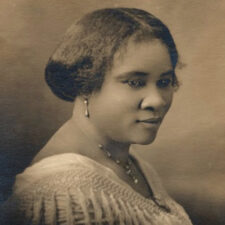
Madam C. J. Walker Highlighted by our Black Resource Center
She controlled all aspects of her business, including manufacturing, employing a door-to-doors sales force, and owning beauty shops that sold her products.
With her sales team, Walker provided career opportunities for African American women. She encouraged her employees to be charitable to local communities, and modeled philanthropy with her support of groups including the NAACP, The National Conference on Lynching, and National Association of Colored women.
Walker, then Sarah Breedlove, was born in Delta, Louisiana, and was the first child in her family born into freedom after the Emancipation Proclamation. She was an orphan at age 10 and moved around the country throughout her life. In 1906, at the age of 37, she changed her name to Madam C.J. Walker and began building her business. By 1917, she was operating the country’s largest Black-owned business with over 3,000 employees.
In her will, she directed that the Madame C.J. Walker Manufacturing Company always have a female president.
Books
On her own ground: the life and times of Madam C.J. Walker
by Bundles, A’Lelia Perry
Madam C.J. Walker : the making of an American icon
by Ball, Erica
Her dream of dreams : the rise and triumph of Madam C.J. Walker
by Lowry, Beverly
Books for Young Adults
Madam C.J. Walker : entrepreneur
by Bundles, A’Lelia Perry
J
Madam C.J. Walker : self-made millionaire
by Nnachi, Ngeri
Madam C. J. Walker : the beauty boss
by Rodriguez, Janel
Online Resources
Official website
Indiana Historical Society
National Museum of African American History and Culture
Background of Women’s History Month
March is Women’s History Month, a time to recognize, celebrate, honor and encourage the study of the contributions and achievements of women throughout history and all over the world. LA County Library is doing its part to celebrate with live virtual programming, booklists, and digital resources for all ages.
At first, this celebration of women’s history was only a week-long program, and it occurred in March 1978 in Sonoma County, California. Many people observed the program’s success, and other communities across the country initiated their own Women’s History Week.
The National Women’s History Project, now known as the National Women’s History Alliance, and other likeminded organizations successfully lobbied the federal government for national recognition of Women’s History Week in 1980.
In February of that year, President Jimmy Carter issued the first Presidential Proclamation declaring the Week of March 8, 1980 as National Women’s History Week (March 8 is International Women’s History Day).
Years later, President Ronald Reagan passed further proclamations announcing Women’s History Weeks. However, by then some areas had already extended their celebrations to a whole month. The Women’s National History Project lobbied for a longer observation, and Congress passed a proclamation in 1987 establishing Women’s History Month.
Work Ready: ART of Conquering Fear With Christy Demetrakis Work Ready: Women Entrepreneurs Speak Notable Black & African Americans in STEAM: Dr. Patricia Bath Notable Black & African Americans in STEAM: Dr. Marie Maynard Daly Notable Black & African Americans in STEAM: Bessie Blount Griffin Notable Black & African Americans in STEAM: Gwendolyn Brooks
OverDrive Women’s Studies (eBooks and Audiobooks) Kanopy Women & Society (Movies) Kanopy Movies Directed by Women (Movies) Hoopla Women’s Fiction (Audiobooks) Fighter: A Women’s History Month Freegal Playlist (Music)











